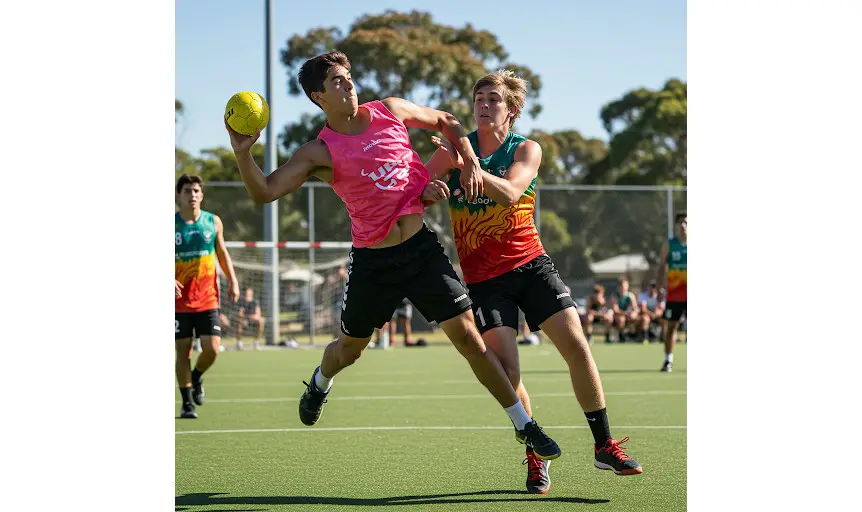
Australian Handball: A Dynamic Sport Rooted in Culture and Competition
Australian Handball is a thrilling and fast-paced sport that captivates players and spectators alike. Originating from Australia, this unique game combines skill, strategy, and athleticism. Despite its regional roots, it has grown steadily, earning recognition globally. This blog explores its origin, history, global presence, amateur play, professional leagues, societal significance, and rules. Australian Handball offers an engaging blend of tradition and modern competition, making it a fascinating subject.
The Origin and History of Australian Handball
Australian Handball traces its roots back to schoolyards and recreational spaces in Australia. Emerging as a pastime among children, it gained popularity for its simplicity and inclusivity. With minimal equipment required, players could enjoy the game almost anywhere.
In the early 20th century, the sport began to evolve. Rules became formalized as communities embraced its recreational and competitive potential. Clubs were established to foster talent, and tournaments provided platforms for showcasing skills.
By the mid-20th century, Australian Handball gained prominence in schools. Educators recognized its value in promoting physical activity and teamwork. This integration into curriculums further solidified its presence in Australian culture. Today, the sport symbolizes unity, tradition, and athletic prowess, celebrated nationwide.
The Global Popularity of Australian Handball
Although originating in Australia, the sport has attracted attention internationally. It is played recreationally and competitively in regions like New Zealand, parts of Europe, and even North America. Enthusiasts appreciate its adaptability to different environments, from indoor courts to outdoor spaces.
Global tournaments have amplified its appeal. Events showcasing Australian Handball bring together players from diverse backgrounds, fostering cultural exchange. The sport’s inclusion in international multi-sport events has further raised its profile.
The digital age has also contributed to its global reach. Social media platforms and streaming services allow enthusiasts to share matches and training sessions. This visibility inspires new generations to participate and adopt the game.
Amateur Play: Youth and Schools
Amateur Australian Handball thrives in schools and communities. Its simplicity makes it accessible to players of all ages. In schools, it is often part of physical education programs. Teachers use the game to teach coordination, strategy, and sportsmanship.
Youth leagues provide structured opportunities for young players to compete. These leagues emphasize skill development and teamwork while maintaining a focus on enjoyment. Regular tournaments encourage healthy competition and camaraderie among participants.
Community centers and local clubs also play a vital role. They organize friendly matches and workshops, introducing the sport to newcomers. These grassroots efforts ensure that Australian Handball remains inclusive and widely played.
Professional Leagues Around the World
Professional leagues for Australian Handball have emerged in recent years, offering a platform for elite athletes. In Australia, the National Handball League (NHL) showcases top talent. The league features teams from major cities competing in high-stakes matches.
Internationally, professional leagues exist in countries with established handball communities. In Europe, clubs integrate Australian Handball as part of their sports programs. These leagues attract players seeking professional opportunities and greater competition.
Annual championships and tournaments highlight the best teams and players. Sponsorships and media coverage contribute to the sport’s growing professional landscape. As more countries recognize its potential, Australian Handball continues to expand its professional footprint.
Political and Social Significance
Australian Handball holds a unique place in society. Politically, it serves as a unifying force, transcending cultural and geographical barriers. Governments often support handball programs as part of broader initiatives to promote physical health and community engagement.
Socially, the sport fosters inclusion and teamwork. It brings together players from different backgrounds, creating a sense of belonging. Community events centered around handball strengthen bonds among residents. Schools use it to teach values like discipline, cooperation, and resilience.
The sport also plays a role in youth development. Programs targeting underprivileged areas use handball to inspire positive change. These initiatives provide children with mentorship, education, and athletic opportunities, demonstrating the transformative power of sports.
Rules of Australian Handball
Understanding the rules is essential for enjoying Australian Handball. The game typically involves two to four players and requires a small rubber ball. A court is divided into equal squares, with each player occupying one square.
Players aim to hit the ball into another player’s square without committing faults. Faults include failing to return the ball, letting it bounce multiple times, or hitting it out of bounds. Points are scored when opponents commit faults.
The game starts with a serve, which must be fair and within bounds. Players take turns returning the ball, using strategic placement to challenge opponents. Matches continue until a predetermined score or time limit is reached.
Variations exist based on age, skill level, and location. Casual games may have relaxed rules, while competitive matches adhere to standardized guidelines. This flexibility ensures the sport remains engaging for all participants.
Conclusion
Australian Handball is more than just a sport; it is a cultural phenomenon. Its rich history, global presence, and significance in education and society underscore its impact. Amateur play fosters community and youth engagement, while professional leagues showcase elite talent.
As Australian Handball continues to grow, it inspires unity and passion among players and fans worldwide. Whether played in schoolyards or professional arenas, it embodies the joy of competition and the spirit of togetherness. This dynamic sport has a bright future, promising to captivate generations to come.





